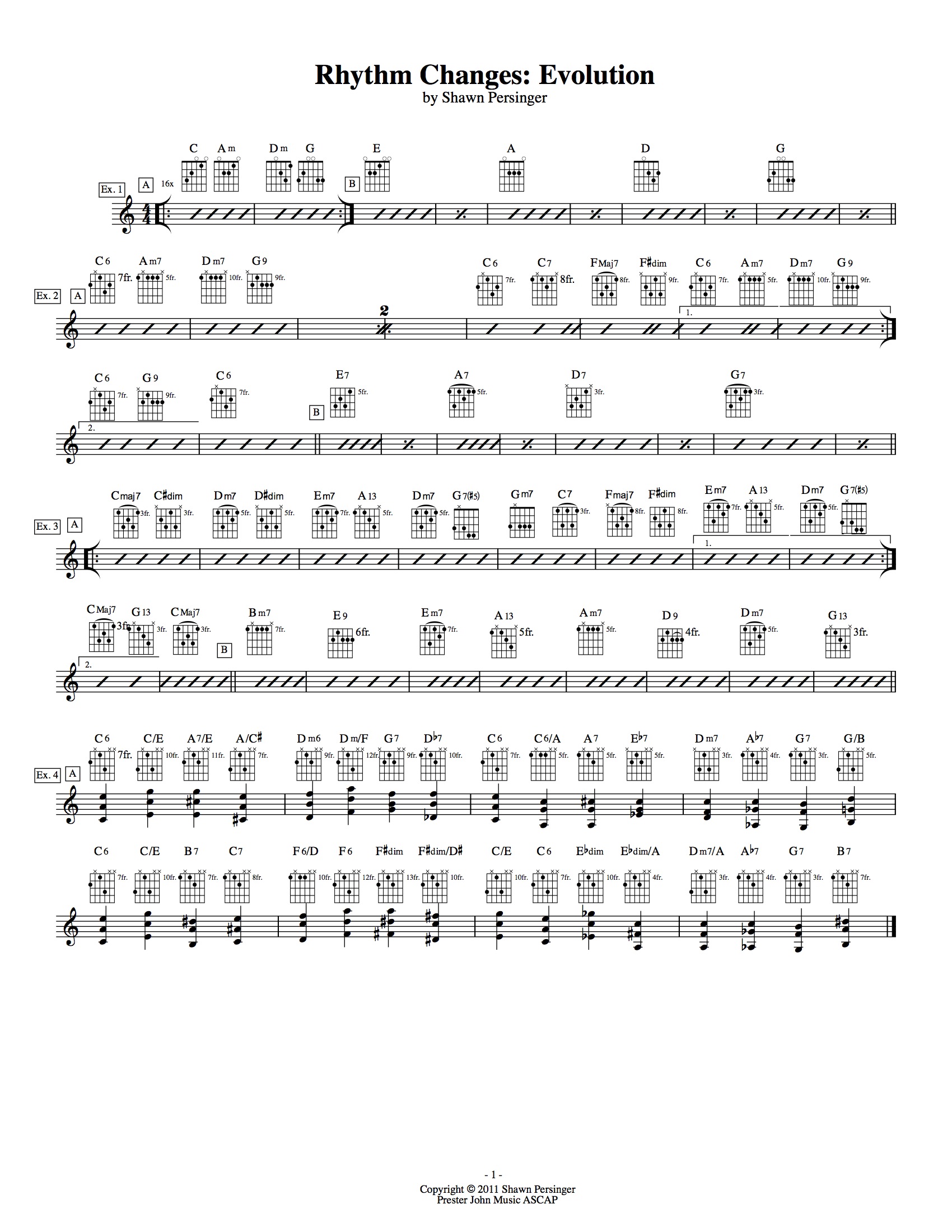Here’s a lesson I wrote while teaching my Swing Guitar class at Guitar Intensives Camp last year.
One wonders if George Gershwin ever imagined the countless variations, permutation and straight-up imitations his song “I’ve Got Rhythm” was to spawn when he penned this classic tune in 1930. For a couple of years I’ve been cataloguing a list of songs that use the basic progression in one form or another and my list is up to no less than 175 well known songs, including 25% of Charlie Parker’s compositions, dozens of Do Wop standards and what seems to be just about every pop/rock hit of the last 15 years from Coldplay to Green Day.
The basic idea behind all of these variations is the art of chord substitution, which basically states that for every three note chord there are at least two other chords that can be substituted because they share at least two of the same notes e.g.: a G chord spelled (GBD) shares notes with Em (EGB) and Bm (BDF#). For chords with four or more notes there are as many as six rational substitutions.
Examples 1shows the song with its most basic chords. The form of the song is the A section twice (8 bars 2x), the B section and finally one more A section, AABA. Because of the simplicity and repetitive nature of this first example I highly recommend singing through the song’s original lyrics to keep your place.
Example 2 transforms the basic chords with jazzier harmonies. Example 3 adds some chromatic diminished chords (the C#dim substituting for A7, which can sub for the Am7) and some hipper, bebop style extensions, the 13th chords and the G7(#5) in particular.
Example 4 (demonstrating just the first A section) is a ridiculously busy, Freddie Green style, variation with a different chord on every single beat. I should point out that neither Freddie, or I, would ever play this busily to accompany another guitarist, soloist or singer, it’s just too much movement…but it sure sounds great in a music store!




























